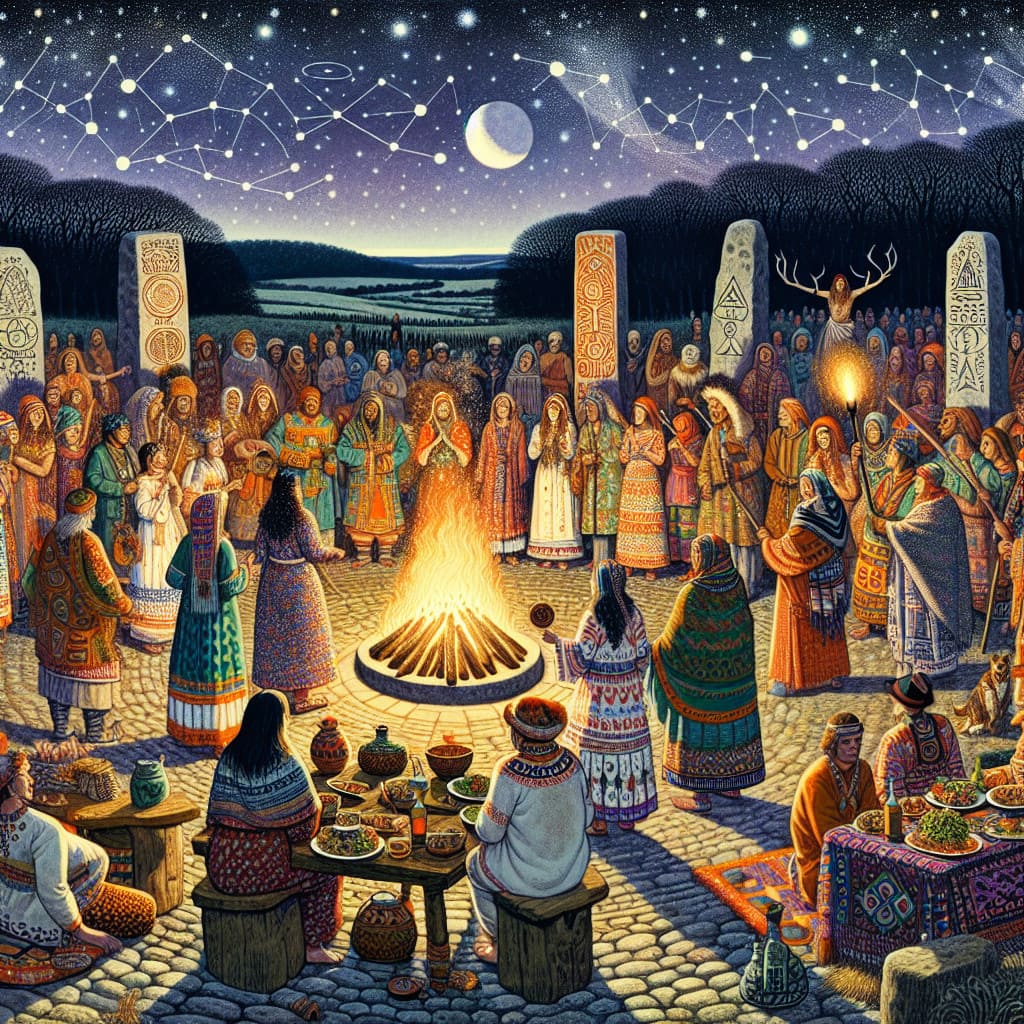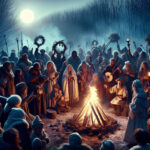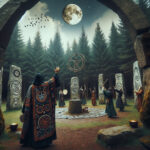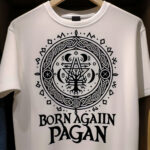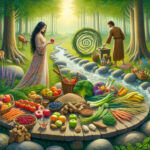The winter holidays that many of us celebrate every year have roots in pagan customs and traditions. From Christmas trees to Yule logs, the winter season is full of symbolism and history that can be traced back to ancient pagan beliefs. In this article, we will explore the origins of some of our most beloved winter holiday traditions and how they evolved over time to become part of our modern celebrations.
Holidays with Pagan Origins
Paganism is a set of religious beliefs and practices rooted in pre-Christian and indigenous traditions. While modern Pagans can come from any religious background, many of their rituals and traditions are rooted in ancient pagan cultures and beliefs. From the celebration of the winter solstice to the Easter Bunny, many of our beloved holidays have their origins in pagan rituals and beliefs.
Halloween
Halloween is one of the most well-known and widely celebrated holidays with pagan origins. It is believed to have originated with the ancient Celtic festival of Samhain, which marked the end of the harvest season and the beginning of winter. During Samhain, it was believed that the veil between the physical and spiritual world was thin and that spirits could pass through. Celebrations included bonfires, costumes, and offerings to the gods.
Yule
Yule is a winter solstice celebration that has been celebrated by Pagans and non-Pagans alike for centuries. It marks the shortest day of the year and the beginning of the return of the sun and the lengthening of days. For many Pagans, Yule is a time for reflection, celebration, and renewal. Traditions include the lighting of the Yule log, decorating with evergreen boughs, and gathering around the fire to exchange gifts and stories.
Imbolc
Imbolc is a festival that marks the midpoint between the winter solstice and the spring equinox. It is celebrated on February 1st in the Northern Hemisphere and August 1st in the Southern Hemisphere. Imbolc is a time to celebrate the coming of spring and to honor the goddess Brigid. Traditions include ritual candles, the making of Brigid crosses, and the blessing of seeds that will be planted in the coming season.
Beltane
Beltane is a festival that marks the beginning of summer and is celebrated on May 1st. It is believed to have originated with the ancient Celts and to signify the end of winter and the beginning of the fertility season. Traditions include the lighting of bonfires, the decorating of maypoles, and the gathering of flowers to make garlands.
Lammas
Lammas is a festival that marks the beginning of the harvest season and the start of the autumn. It is celebrated on August 1st in the Northern Hemisphere and February 1st in the Southern Hemisphere. Traditions include the baking of bread, the making of corn dollies, and the offering of grain to the gods.
Mabon
Mabon is a festival that marks the autumn equinox and the beginning of the dark half of the year. It is celebrated on September 21st in the Northern Hemisphere and March 21st in the Southern Hemisphere. Traditions include the harvest of the last crops, the sharing of food and drinks, and the honoring of the gods of the harvest.
Samhain
Samhain is a festival that marks the end of the harvest season and the beginning of winter. It is celebrated on October 31st in the Northern Hemisphere and April 30th in the Southern Hemisphere. Traditions include the lighting of candles, the decorating of Jack-O-Lanterns, and the honoring of ancestors and the gods of the underworld.
Ostara
Ostara is a festival that marks the spring equinox and the beginning of the light half of the year. It is celebrated on March 21st in the Northern Hemisphere and September 21st in the Southern Hemisphere. Traditions include the planting of seeds, the decorating of eggs, and the honoring of new life.
Lughnasadh
Lughnasadh is a festival that marks the beginning of the harvest season and the start of the autumn. It is celebrated on August 1st in the Northern Hemisphere and February 1st in the Southern Hemisphere. Traditions include the baking of bread, the making of corn dollies, and the offering of grain to the gods.
Conclusion
As you can see, many of our beloved holidays have their roots in pagan traditions and beliefs. From Halloween to Yule, Imbolc to Beltane, and Mabon to Lughnasadh, these holidays provide us with an opportunity to connect with our ancestors and to remember the importance of the cycles of nature. Whether you are a Pagan or not, it is important to take the time to acknowledge and celebrate these ancient traditions.
Pagan holidays are a great way to celebrate the changing of the seasons and the importance of nature in our lives. They offer a unique way to connect to our ancestors and to the earth. From the ancient druids of Britain to the Aztecs of Central America, pagan holidays have been celebrated for centuries and are still celebrated today. They are a reminder of our shared heritage and of the importance of preserving our natural environment. Celebrating pagan holidays is a way to honor our past and to ensure that we will have a future. By understanding the pagan origins of our holidays, we can reconnect to our roots and appreciate the beauty of our world.

